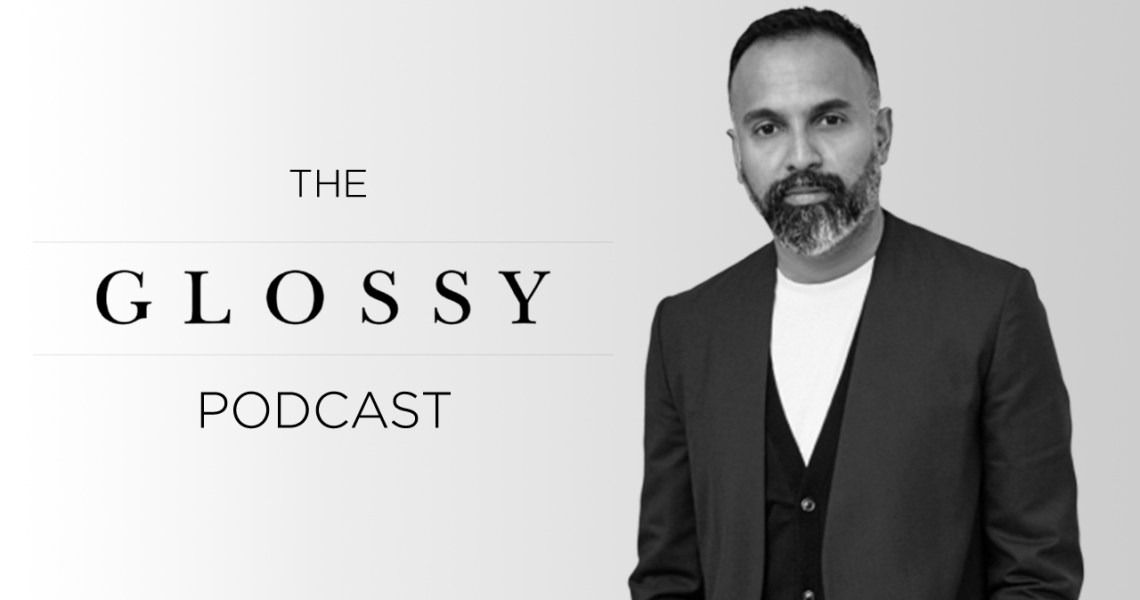Subscribe: iTunes | Stitcher | Google Play |Spotify
After a decade of working in the fashion industry, Ganesh Srivats decided he needed something more.
The fashion industry wasn’t evolving at the pace he wanted, so he made the decision to join a company he felt was: Tesla. But after only three years, an opportunity arose in fashion that he couldn’t resist.
“It was definitely a big change, but at the same time, not that unusual. I spent a majority of my career in fashion before I went to Tesla: I was at Burberry for a good 10 years, in various roles, but I left for Tesla because I was looking for a more disruptive tech environment,” said Srivats. “I didn’t feel fashion was innovating or disrupting itself fast enough. But when Moda Operandi came calling, I was very intrigued because it suddenly felt like an opportunity to combine the two things I love: fashion and disruptive tech environments.”
Now serving as the CEO of Moda Operandi, Srivats is using his passion for technology to make waves in the retail and fashion industries. By using a combination of consumer-data-driven algorithms and stylist-curated collections, the fashion e-commerce platform gives consumers a unique selection that includes items directly from the runway.
In this week’s episode of The Glossy Podcast, Hilary Milnes sits down with Srivats to discuss the intersection of tech and fashion, the model of giving consumers direct access to runway collections, and the way to serve as a partner for designers. Edited highlights below.
Ad position: web_incontent_pos1
Going beyond data
“We’re not walking away from our stylist network or the high-touch experience. What we’re thinking about is: How do you incorporate high tech with the high touch? First of all, on the supplier side, we have a very close relationships with designers and brands, and we work very closely with them on how we bring them to market, how we launch them on Moda and how we give them a platform. We’re also always bringing in new designers, and part of what we’ve always done is make sure that our customers see and connect with those new designers, which can challenge them in ways. So throughout the customer journey, two things happen: One, if I understand your preferences, then we can use data and technology to not just show you the familiar but also challenge you and show you things that are more adjacent. And, two, we’re going to continue growing our stylist network as the heart of this business strategy. So what you’re going to find interesting in the future is how we deal with this whole ecosystem of discovery, because you don’t discover things through one source, but through a diversity of sources.”
Reconnecting transaction and discovery
“A few times a year, designers present their collections, and it’s typically in major fashion centers like New York, Paris and Milan during fashion week, and buyers fly in from across the world and place their bets. What we do is, at the same time the fashion industry and insiders get to see those collections, either on the runway or in a showroom, we’re presenting those collections directly to the consumer. The point is: When does discovery happen? In the old days, you’d go to a retailer, see what they have to offer. To some extent, the consumer’s awareness of available choices was shaped by what people chose to show them, and I think that’s changed now. Our sense of available choice has expanded. Now you’re looking for who can fulfill something you’ve already seen and desired. That’s the difference in retail today, and what we’re trying to do is reconnect transaction and discovery.”
Empowering the designers
“We see ourselves as a partner to the designer community, because their success is our success. Today, close to two-thirds of the designers that we have, no one else carries, or they carry them in very limited ways. So we can be the primary vehicle on which somebody launches a new business. We scour the world for new talent, and we can break them faster because we don’t have to worry about inventory risk. We can shoot the collection, present it in sizes and wait to see what happens. Over time, we want to become a platform on which designers can build sustainable businesses. How can we help them grow and scale? That’s something we’re really looking at.”


